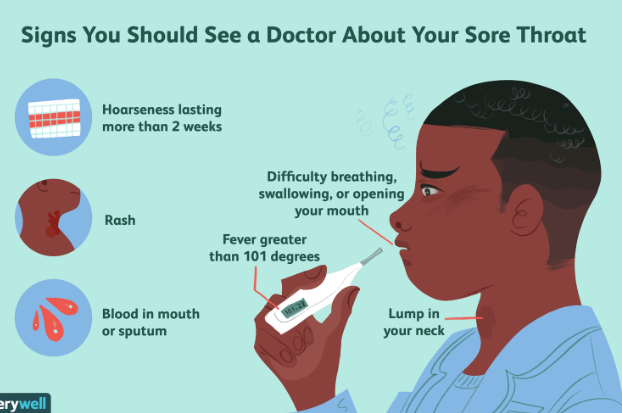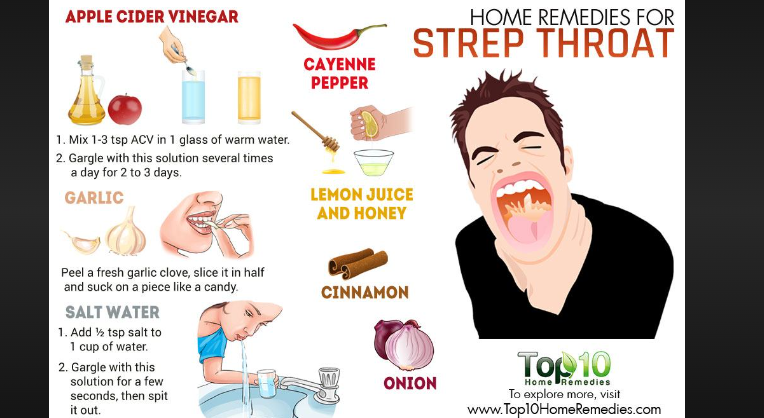Soothing Solutions: How to Get Rid of Sore Throat from Paint Fumes
Engaging in home improvement projects can bring a sense of accomplishment, but it can also lead to unexpected challenges. One such challenge is dealing with a sore throat caused by exposure to paint fumes. In this article, we'll provide you with a comprehensive guide on how to get rid of a sore throat from paint fumes, ensuring your well-being during and after your painting endeavors.

Signs you should see a doctor about your sore throat
1. Understanding Paint Fume Irritation
Before we delve into the solutions, it's important to understand why paint fumes can cause a sore throat.
Paints contain various chemicals, including volatile organic compounds (VOCs), which can evaporate into the air and be inhaled.
These fumes can irritate the respiratory tract, leading to symptoms like a sore throat, coughing, and nasal congestion.
2. Prevention: Minimizing Exposure
Prevention is key when it comes to dealing with paint fume-related sore throats. Here are some steps you can take to minimize your exposure:
-
Proper Ventilation: Ensure good ventilation in the painting area. Open windows and doors to allow fresh air to circulate and fumes to dissipate.
-
-
Use Respiratory Protection: Wear a mask specifically designed for paint fume protection. N95 respirators can help filter out harmful particles and VOCs.
-
-
Limit Duration: Try to limit your time in the painted area. Take breaks outside to breathe in fresh air.
3. Immediate Relief: Home Remedies
If you find yourself with a sore throat after exposure to paint fumes, there are several home remedies you can try for immediate relief:
-
Hydration: Drink plenty of water to keep your throat moist and soothe irritation.
-
-
Honey and Lemon: Mix warm water with honey and a squeeze of lemon. This concoction can provide relief for a sore throat.
-
-
Saltwater Gargle: Gargling with warm salt water can help reduce inflammation and discomfort.
-
-
Steam Inhalation: Inhale steam from a bowl of hot water to soothe your throat and nasal passages.
-
-
Throat Lozenges: Over-the-counter throat lozenges can temporarily numb the throat and ease discomfort.
4. Rest and Recovery
After exposure to paint fumes, your body needs time to recover. Here's how you can aid the healing process:
-
Rest: Allow your body to rest and recuperate. Avoid strenuous activities that could strain your throat.
-
-
Humidify the Air: Use a humidifier in your living space to keep the air moist, which can prevent further irritation.
-
-
Avoid Irritants: Steer clear of other irritants, such as tobacco smoke and strong odors, as they can worsen your symptoms.
5. Medical Intervention
If your sore throat persists or worsens, it's important to seek medical attention.
A healthcare professional can provide proper diagnosis and recommend suitable treatment options. In some cases, prescription medications or additional medical interventions might be necessary.
6. Long-Term Prevention Strategies
To prevent paint fume-related sore throats in the future, consider implementing these long-term strategies:
-
Choose Low-VOC Paints: Opt for paints labeled as low-VOC or VOC-free. These options emit fewer harmful fumes.
-
-
Paint in Well-Ventilated Areas: Whenever possible, paint in areas with proper ventilation to minimize fume exposure.
-
-
Protective Gear: Always wear appropriate protective gear, including masks and goggles, when working with paints and chemicals.
7. Seek Professional Help
For larger painting projects, especially those involving significant fume emissions, consider seeking professional painters.
They are equipped with knowledge, experience, and tools to ensure both the quality of the paint job and your safety.

Home remedies for strep throat
Dealing with a sore throat from paint fumes can be uncomfortable, but with the right precautions and remedies, you can find relief and prevent future occurrences. By prioritizing proper ventilation, using protective gear, and employing home remedies, you can navigate your painting projects while safeguarding your respiratory health. Remember that if your symptoms persist or worsen, seeking medical advice is crucial for proper diagnosis and treatment.